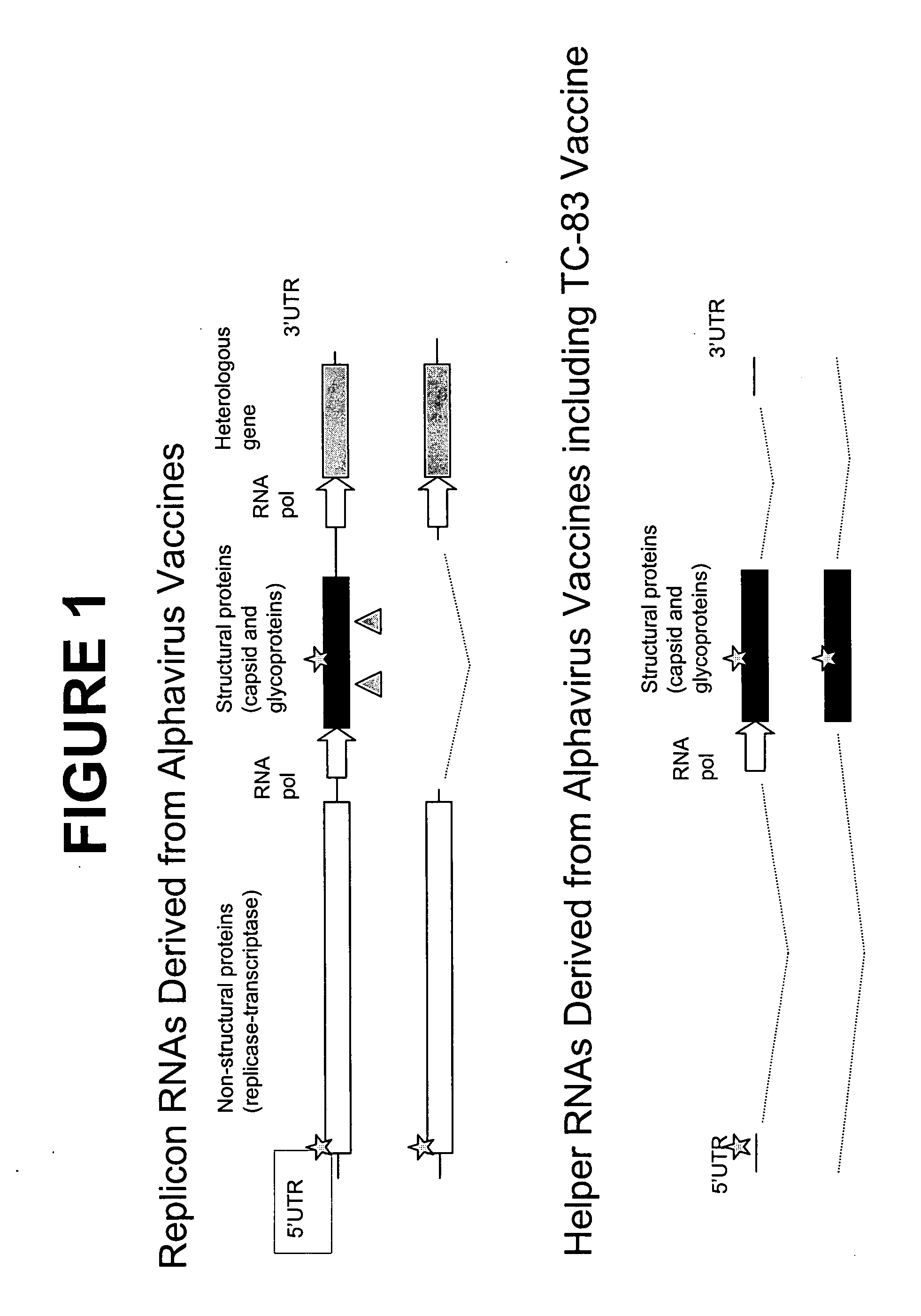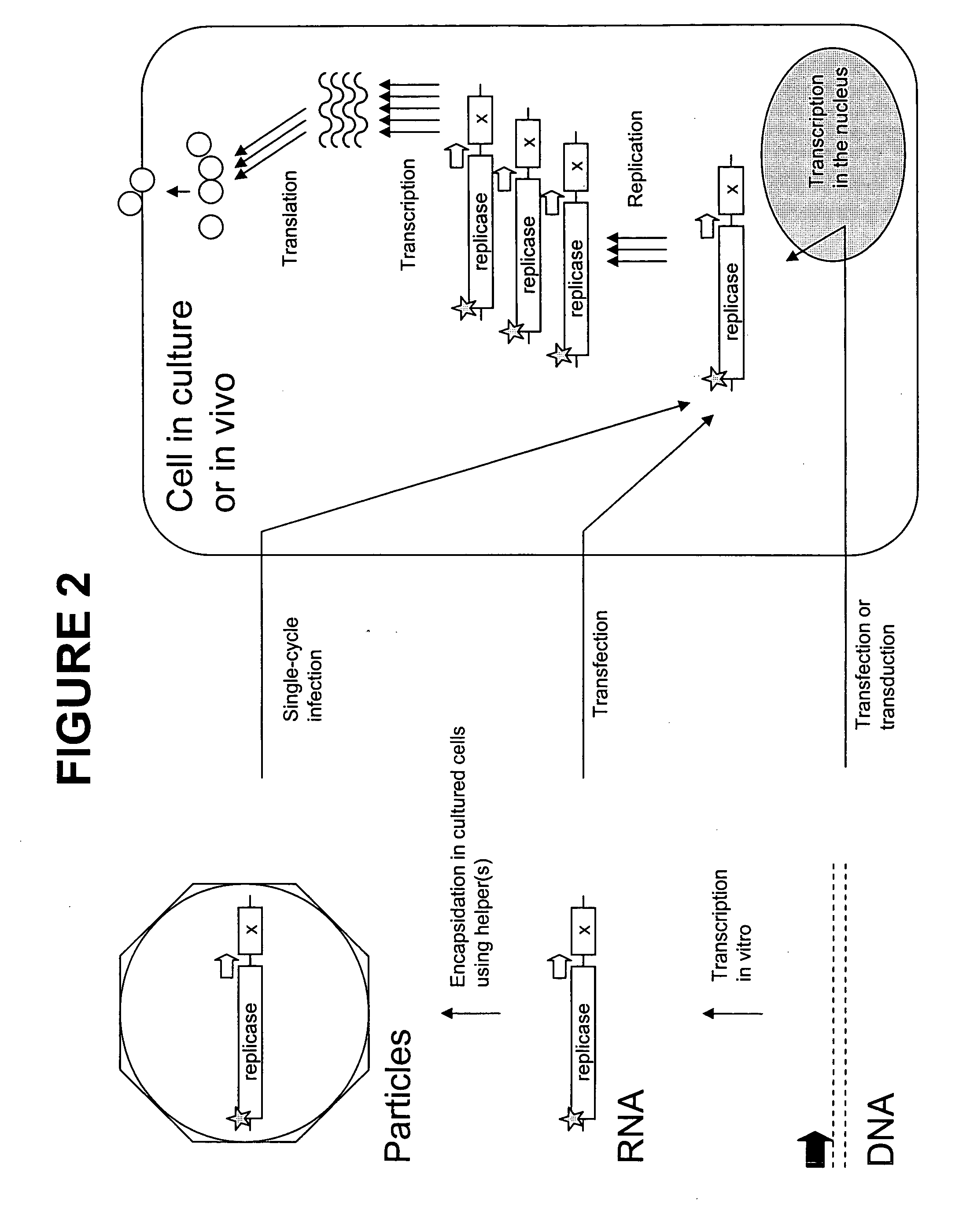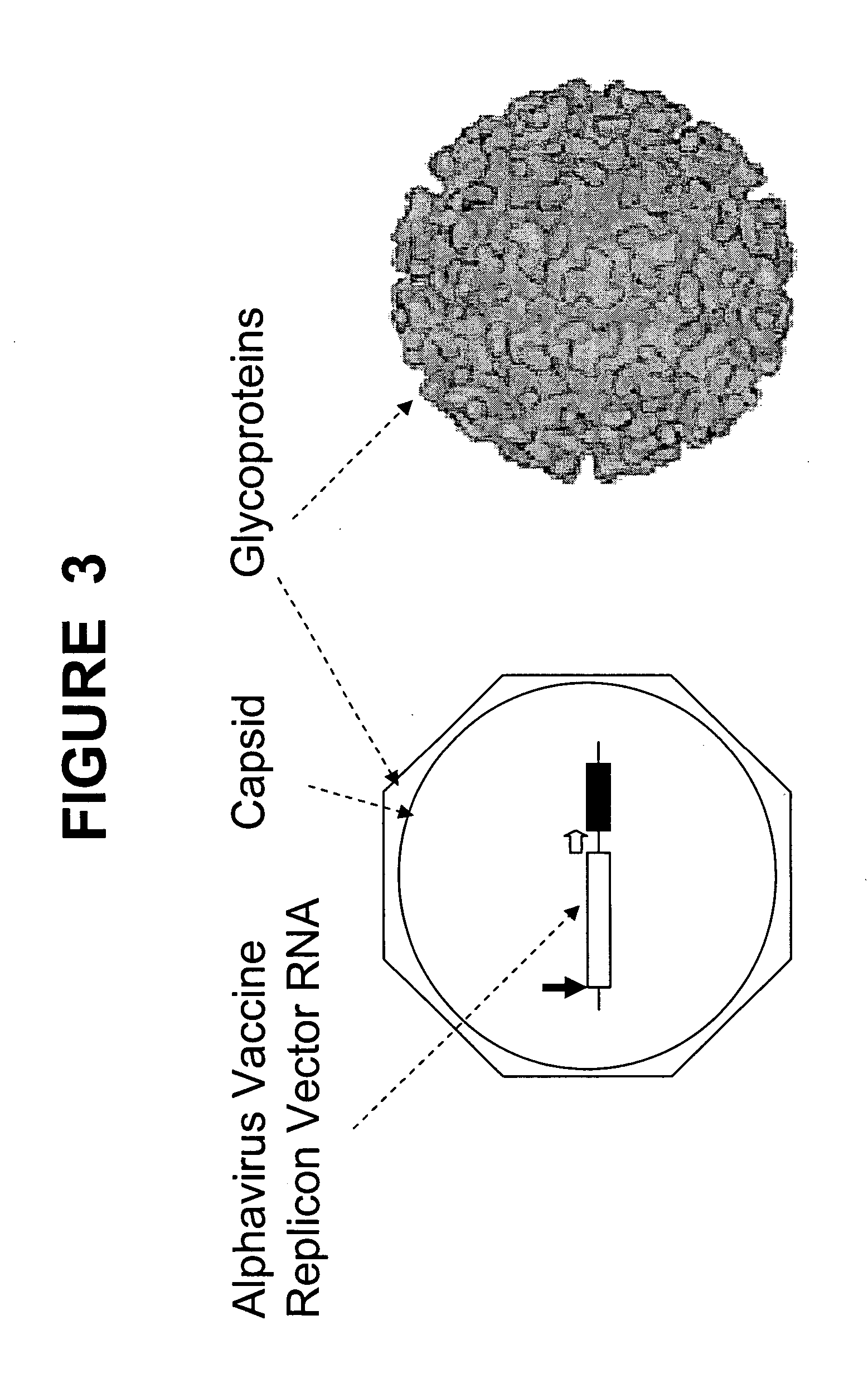Vector platforms derived from the alphavirus vaccines
a technology of alphavirus and vector platform, which is applied in the field of gene vectors made from viral vaccines, can solve the problems of inherent safety problems of alphavirus vector platform including those derived from v
- Summary
- Abstract
- Description
- Claims
- Application Information
AI Technical Summary
Benefits of technology
Problems solved by technology
Method used
Image
Examples
example 1
Cloning and Production of Replicon and Helper RNAs
[0091] Total RNA is extracted from TC-83 vaccine using phenol extraction or a similar method. The cDNAs corresponding to TC-83 replicon and helper RNAs are derived by reverse transcription and polymerase chain reaction (RT-PCR) using extracted TC-83 viral RNA and the TC-83 sequence-specific oligonucleotide primers. Compared to wild type VEE virus, there are 17 mutations in the TC-83 genome (Table II).
[0092] The cDNA fragments corresponding to replicon and helper RNAs are cloned into plasmid containing functional DNA-dependent RNA polymerase so that in the result of transcription in vitro or in vivo, functional RNA replicon and / or helper are generated.
[0093] The heterologous gene is cloned downstream from the TC-83 replicase and 26S promoter in the transcription plasmid containing the TC-83 replicon cDNA (FIG. 1). An exogenous gene is either cloned in addition to the full-length TC-83 genome, or substituted for the genes that encod...
example 2
Protein Expression and Production of Alphavirus Replicon Particles
[0096] Eukaryotic cells are transfected by electroporation and incubated for approximately 30 hr. In order to demonstrate expression of heterologous protein from the replicon or TC-83 proteins from the helpers, cells are lysed in a buffer containing 50 mM Tris-HCl (pH 6.8), 5% 2-mercaptoethanol, 10% glycerol, and 1% sodium dodecyl sulfate. Proteins are separated, for example using 7% or 4 to 12% polyacrylamide gels. Western blotting is carried out using serum recognizing heterologous protein, or a TC-83 vaccine-specific serum, or monoclonal antibodies, followed by the appropriate peroxidase labeled secondary antibodies.
[0097] The TC-83 replicon particles are prepared by cotransfecting eukaryotic cells, for example Chinese hamster ovary (CHO) cells. For example, CHO cells can be transfected with replicon RNA along with the TC-83 c-helper and gp-helper RNAs (FIG. 4). As an example, eukaryotic cells are cotransfected b...
example 3
Titration of Particles
[0098] Titers are determined by immunofluorescence assay (IFA). CHO or BHK cells are grown to subconfluency in eight-well chamber slides, and particles are diluted at 10-fold increments in the EMEM containing 10% FBS. The diluted particles are absorbed (0.1 ml / well) onto CHO or BHK cell monolayers for 1 h at 37° C. Then, 0.3 ml of the medium is added per well and incubation is continued for about 16 h. Cells are fixed with cold acetone and probed with appropriate polyclonal or monoclonal antibodies specific for the heterologous gene product. Fluorescein-labeled secondary antibodies to immunoglobulin G (IgG) (heavy and light chains) are used at a 1:25 dilution. For double-staining IFA, a mixture of antigen-specific antibodies is used, followed by a mixture of rhodamine- and fluorescein-labeled secondary antibodies.
[0099] Cell nuclei are stained with 1 mg of 49,69-diamidino-2-phenylindole (DAPI) per ml in VectaShield mounting medium (Vector Labs, Inc., Burlinga...
PUM
 Login to View More
Login to View More Abstract
Description
Claims
Application Information
 Login to View More
Login to View More - R&D
- Intellectual Property
- Life Sciences
- Materials
- Tech Scout
- Unparalleled Data Quality
- Higher Quality Content
- 60% Fewer Hallucinations
Browse by: Latest US Patents, China's latest patents, Technical Efficacy Thesaurus, Application Domain, Technology Topic, Popular Technical Reports.
© 2025 PatSnap. All rights reserved.Legal|Privacy policy|Modern Slavery Act Transparency Statement|Sitemap|About US| Contact US: help@patsnap.com



